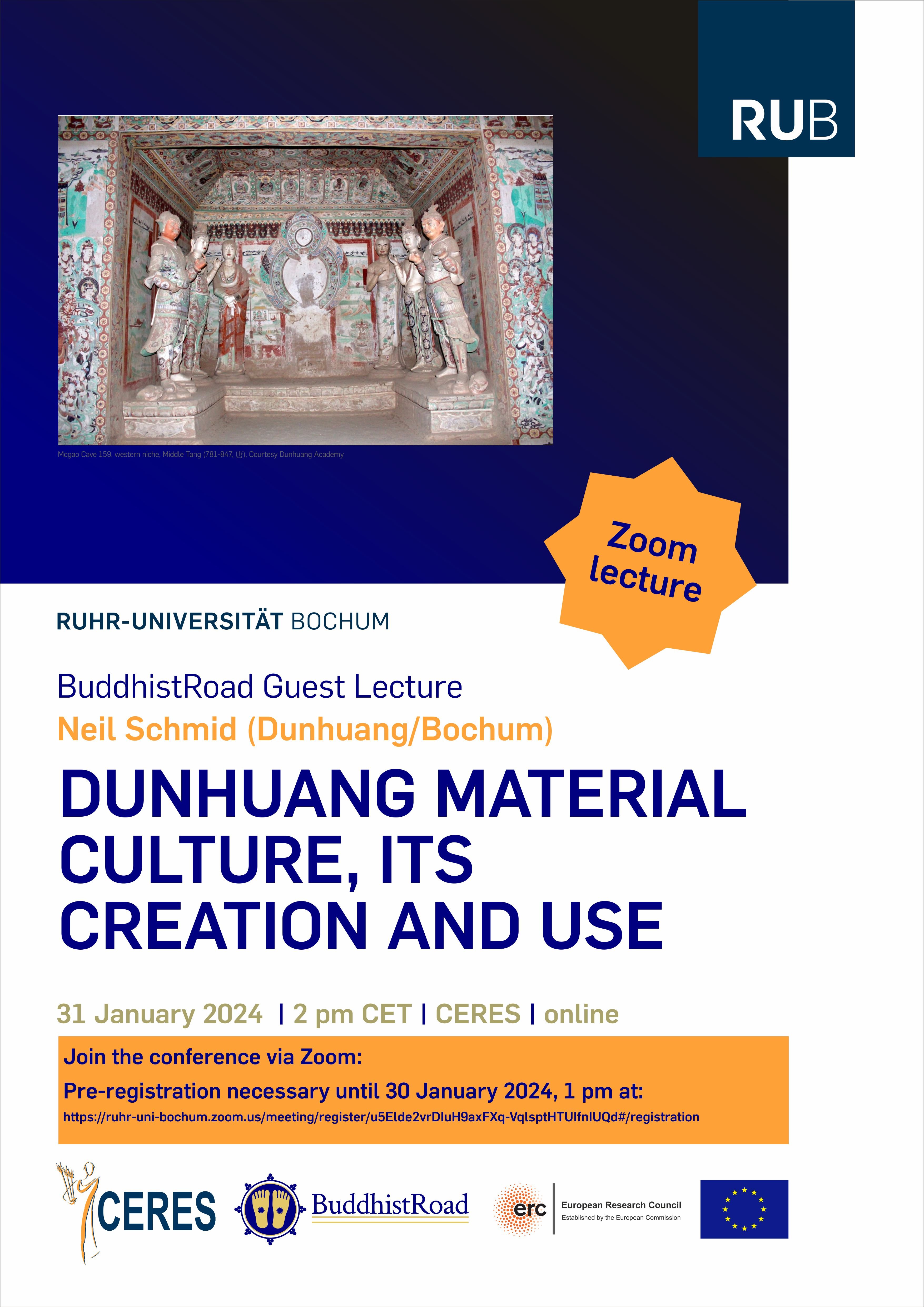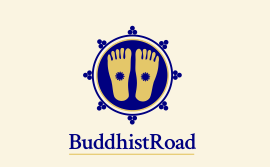Dunhuang Material Culture, Its Creation and Use

31 January 2024 - Neil Schmid (Dunhuang)
Dunhuang Material Culture, Its Creation and Use
online guest lecture series at the BuddhistRoad project, CERES, Ruhr University Bochum
Lecture Series Overview:
Chinese scholarship on the Dunhuang Caves and materials from the so-called Library Cave, one of the greatest archaeological finds of the 20th century, has expanded rapidly over the past twenty years. An ever-increasing number of academics, research projects, and publications have provided a wealth of scholarly resources for the field. This corpus of research merits more attention from western scholars, not just in Dunhuang Studies but from across a variety of disciplines in the humanities and social sciences. This series of six talks will explore this breath of Chinese scholarship and provide a guide to major areas within Dunhuang Studies, its key scholars, publications, research projects, institutions, and trends.
This series of talks also takes an ethnographic approach on two levels. The first is that Dunhuang materials, given their range and diversity, can be viewed as a coherent dataset, the closest we have to an ethnographic collection for medieval Eastern Central Asia. In this sense then, they should be valued in their complex, interdisciplinary entirety. Second, concentrating on Chinese Dunhuang research in the 21st century, these talks also engage an ethnological approach to the academic realm in order to examine how subfields of Dunhuang Studies are delineated in light of institutions and ongoing social forces. Availing my position as someone in the field of Dunhuang Studies working at a Chinese research institute, I will provide on-the-ground observations through discussions with members of the scholarly community in China (i.e., ‘thick description’), with an emphasis on the explanation of behaviour and agency that accepts emic categories of division of Dunhuang resources and analyses their origins and usages, as well as how those categories may enhance or constrain research together with the production of knowledge and its dissemination.
Each of these lectures will systematically cover the following areas:
- compilation and editing of primary sources materials for all fields
- major scholars and publications, cooperative projects
- research trends (themes and topics)
- reference and research tools
Finally, given the framework and sponsor of these talks, the resources explored will be keyed to the seven thematic research clusters of the BuddhistRoad Project (Center for Religious Studies, Ruhr-Universität Bochum) to further scholarship on topics within the context of Eastern Central Asia and their relation to Chinese Dunhuang Studies.
The final talk in the series ties together a variety of themes and topics in previous lectures through the exploration of Chinese scholarship on material culture. Picking up from the previous lecture, this presentation reviews recent and ongoing projects digitising and cataloging Dunhuang caves and their contents. In the context of Chinese Dunhuang Studies, the category of material culture also extends to objects illustrated within cave murals, ranging from furniture to clothes to musical instruments, all of which have become research topics in their own right. Another rich area of research, spanning image and realia, are textiles and fabrics, as well as votive objects such as banners from the Library Cave. In addition to study on the visual programmes of Dunhuang Caves and their contents, Chinese scholars have increasingly focused on the degree to which material culture documents the transmutation of Buddhism in its transmission from India to China via Central Asia. The talk will close with summary of primary trends and future directions in Chinese Dunhuang Studies.


